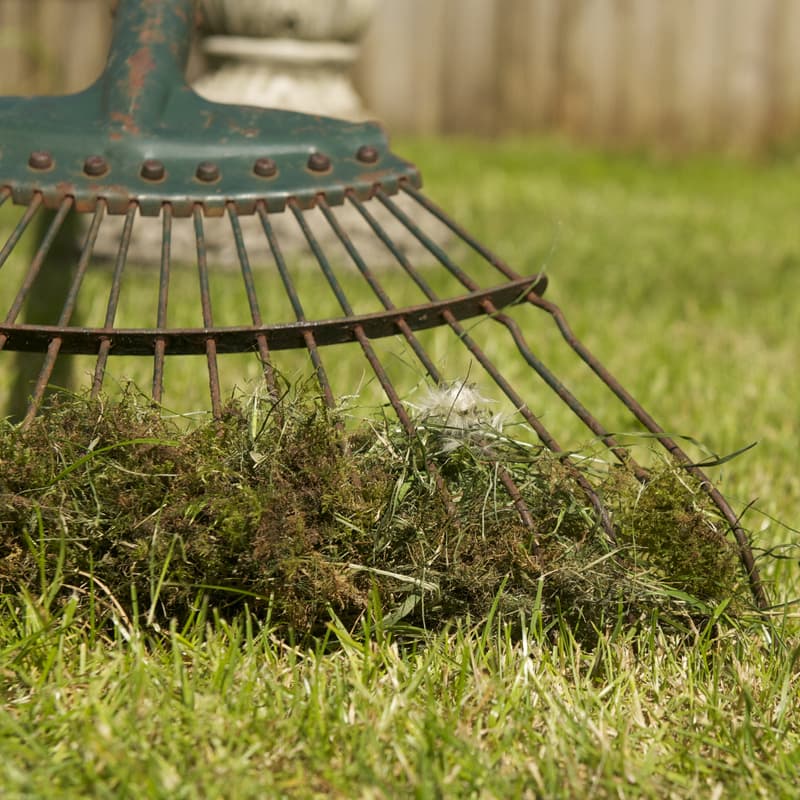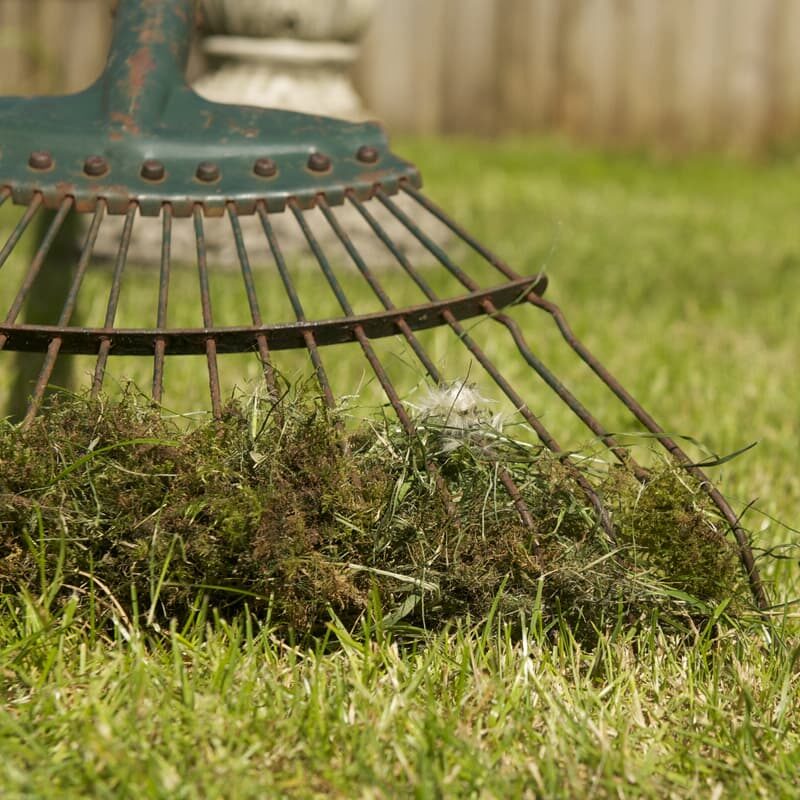After the long hot summer and drought our lawns are loving the recent rainfalls even if we are not. As the growth has slowed down you can raise the height of your mower to 4cm and mow less often. Collect the clippings and put them on your compost heap or in your green waste bin. Never mow a wet or frosty lawn. Autumn is a great time to treat your lawns as there is time for remedies to take effect before the temperatures fall and growth stops.

Regular raking (scarifying) of your lawn will remove the thatch that has built up. Go over your lawn vigorously with a spring tined rake and dig out lawn weeds making sure you get the whole root.

Reduce the compaction from heavy use. Use a hollow tined aerator or garden fork and work across your lawn systematically about every 15cm creating holes. This improves drainage and boost root growth. Then sweep a top dressing across the lawn and into the holes. Aerating your lawn only needs doing every two to three years for a lawn with average use. Aeration encourages thicker grass and resistance to damage from drought or flooding.

If you have any bald or thinning patches you can loosen the surface with a fork and scatter grass seed across, cover with a little compost and water in. Alternatively lay some new turf in the bare spaces. (Cut the space larger to fit the turf rather than cutting the turf into small pieces.)

Sprinkle an autumn lawn fertilizer to encourage strong root growth (don’t use spring fertliser which will have too much nitrogen for winter levels of growth).

Lastly use sheers or a lawn edging tool to neaten up the edge of your lawn and stop it encroaching into your flowerbeds.
Leatherjackets are the larva of crane flies they cause yellow patches which die off completely, another sign is birds making round holes in the lawn as they search for them. To treat them apply nematodes to the lawn while the temperature is still above 12’C.











